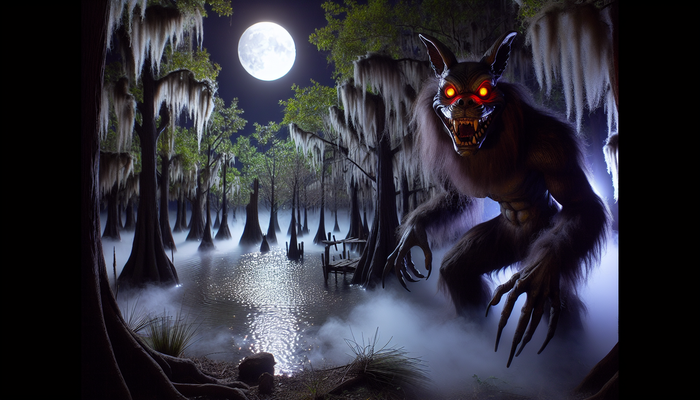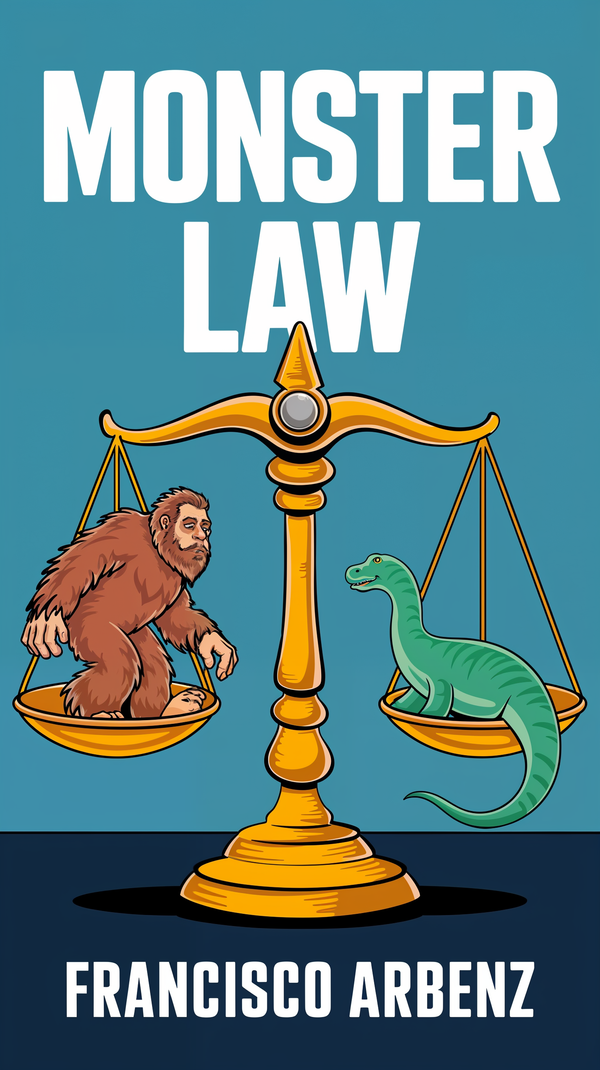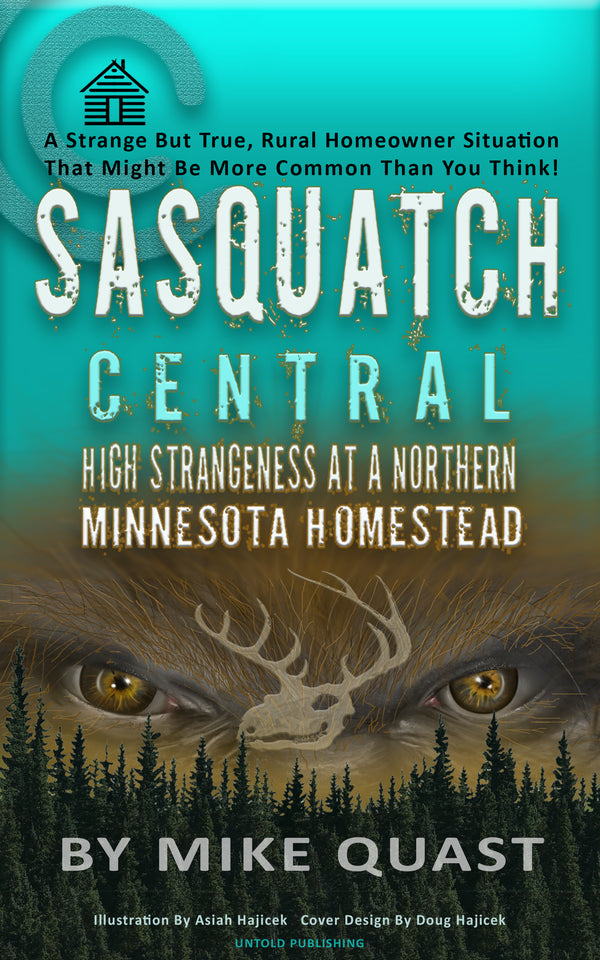History of Arkansas Bigfoot Sightings

By James Roberts, Cryptozoologist
There's something about the untamed wilderness of Arkansas that seems to invite the extraordinary. As a cryptozoologist and avid explorer of the unknown, I've always been drawn to the Natural State's rich tapestry of Bigfoot lore. The enduring fascination with these elusive, hairy bipeds has captivated the imaginations of locals and visitors alike for generations, weaving itself into the very fabric of Arkansas folklore.
But what is it about Arkansas that makes it such a hotbed for Bigfoot activity? As I've delved deeper into the state's cryptozoological history, I've discovered that Arkansas boasts a legacy of Bigfoot sightings that spans over 150 years, with unique aspects that set it apart from other regions. From the earliest accounts of the "Arkansas Wild Man" to the infamous Fouke Monster attacks of 1971, the Natural State has played host to some of the most intriguing and compelling Bigfoot encounters on record.
In this article, we'll embark on a journey through time, unraveling the mysterious history of Arkansas Bigfoot sightings. We'll explore the eyewitness accounts, the physical evidence, and the enduring cultural impact of these enigmatic creatures. Along the way, we'll grapple with the questions that have long haunted cryptozoologists and skeptics alike:
- Do Bigfoot truly roam the forests and swamps of Arkansas, or are they merely the product of overactive imaginations and misidentification?
As we navigate this uncharted territory, I invite you to approach the subject with an open mind and a healthy dose of curiosity. After all, the search for Bigfoot is as much about the thrill of the hunt as it is about the possibility of discovery. So, let's venture into the unknown together and uncover the secrets that lie hidden in the shadows of the Natural State.
The Earliest Accounts of the "Arkansas Wild Man"
Long before the term "Bigfoot" entered the popular lexicon, the dense forests and rugged mountains of Arkansas were already home to tales of strange, hairy, man-like creatures. These early accounts, dating back to the mid-19th century, laid the groundwork for the Bigfoot legend that would later take the state by storm.
One of the earliest known reports of a Bigfoot-like creature in Arkansas appeared in the Arkansas Gazette in 1851. According to the article, two hunters near Greene County had a startling encounter with a "large, hair-covered animal" as it attempted to catch a calf. The description of the creature as a hairy, bipedal entity immediately brings to mind the classic image of Bigfoot.
Just five years later, in 1856, the Caddo Gazette published an even more dramatic account. This time, a group of men on horseback were pursuing a hairy "wild man" when the creature allegedly turned and attacked them. The idea of a violent, aggressive Bigfoot is a recurring theme in many Arkansas sightings, adding an element of danger to the already mysterious legend.
Perhaps one of the most intriguing early accounts comes from the 1865 book "Ozark Country." In this tome, author Otto Rayburn recounts the story of a "giant wild man" that was supposedly captured in the Ouachita Mountains near Saline County. While details are scarce, this tale hints at the possibility of physical evidence – a tantalizing prospect for any cryptozoologist.
It's worth noting that the concept of a "wild man" living in the remote wilderness was a common folklore trope at the time. In the 19th century, the idea of feral humans who had survived catastrophic events or simply chosen to live apart from society captured the public imagination. Some even speculated that the "Arkansas Wild Man" could be a survivor of the devastating New Madrid earthquakes of 1811-1812.
However, the consistency of these early reports, with their descriptions of large, hairy, man-like creatures, suggests that there may be more to the story than mere folklore. These accounts laid the foundation for the Bigfoot legend in Arkansas, planting the seeds of mystery that would continue to grow and evolve over the decades.
As we move forward in our exploration of Arkansas Bigfoot history, keep these early sightings in mind. They represent the first threads in a tapestry of encounters that would eventually lead to the most famous Bigfoot case in the state's history – the Fouke Monster.
The Fouke Monster Attacks of 1971
In the world of Arkansas Bigfoot lore, no case is more infamous or more hotly debated than the Fouke Monster attacks of 1971. This series of alleged encounters, centered around the small town of Fouke in the southwestern corner of the state, catapulted the legend of the Arkansas Bigfoot into the national spotlight and forever changed the way we think about these elusive creatures.
The story begins on a warm May night in 1971, when the Ford family claimed to have had a terrifying encounter with a large, hairy, ape-like creature at their home just outside of Fouke. According to Bobby Ford, the creature, which he estimated to be around 7 feet tall and weighing between 300 and 500 pounds, approached him and put its arm around his shoulder, grabbing him in the process.
Fearing for his life, Bobby managed to break free and flee into his house, where he and his brother Don grabbed their guns and fired at the creature. Despite their efforts, no blood was found at the scene, suggesting that the monster had escaped unscathed.
But the Fords' encounter was far from over. Elizabeth Ford, Bobby's wife, claimed to have seen a hairy, clawed hand reaching through the window as she slept on the couch. The creature's glowing red eyes, she said, peered menacingly into the house, adding an extra layer of terror to an already harrowing experience.
As investigators descended upon the Ford property, they discovered strange, three-toed footprints and claw marks on the porch, lending credence to the family's incredible story. The tracks, measuring up to 17 inches in length and 7 inches in width, were unlike anything the local authorities had ever seen before.
News of the Fords' encounter spread like wildfire, and soon, other residents of Fouke and the surrounding areas began coming forward with their own sightings of the mysterious creature. On May 23, 1971, just weeks after the Ford incident, three people reported seeing an ape-like creature crossing Highway 71 near the town.
As more eyewitness accounts poured in, the media frenzy surrounding the Fouke Monster reached a fever pitch. Journalists from across the country descended upon the small Arkansas town, eager to get a piece of the action. The Fouke Monster, or "Southern Sasquatch" as it came to be known, quickly became a household name.
Theories about the creature's origins abounded. Some speculated that it could be a remnant population of Gigantopithecus, a massive extinct ape that once roamed the forests of Asia. Others suggested that the Fouke Monster might be a previously undiscovered species of primate, uniquely adapted to the swampy terrain of southwestern Arkansas.
Despite the best efforts of investigators and monster hunters, no conclusive evidence of the Fouke Monster's existence was ever found. The creature seemed to vanish into the wilderness as quickly as it had appeared, leaving behind only a trail of unanswered questions and tantalizing possibilities.
But the legacy of the Fouke Monster would endure long after the initial flurry of sightings had faded away. The case had captured the public's imagination in a way that few cryptozoological tales ever had before, and it would go on to inspire a cultural phenomenon that continues to this day.
As we delve deeper into the history of Arkansas Bigfoot sightings, the Fouke Monster looms large as a defining moment in the state's cryptozoological legacy. Its impact on the Bigfoot legend cannot be overstated, and its enduring mystery continues to beckon to those who seek the truth behind the shadows.
The Legend of Boggy Creek and the Fouke Monster's Enduring Legacy
In the annals of Arkansas Bigfoot history, few chapters are as pivotal or as enduring as the legend of Boggy Creek. This sprawling saga, which began with the Fouke Monster attacks of 1971, has since grown into a cultural phenomenon that has captured the imaginations of generations of Arkansans and Bigfoot enthusiasts alike.
At the heart of the Boggy Creek legend is the 1972 docudrama film "The Legend of Boggy Creek," directed by Charles B. Pierce. This low-budget, independently produced movie brought the story of the Fouke Monster to a national audience, forever cementing the creature's place in the pantheon of American cryptids.
Shot on location in Fouke and the surrounding areas, "The Legend of Boggy Creek" blended reenactments of the Ford family's harrowing encounter with interviews of local residents who claimed to have seen the creature for themselves. The film's grainy, documentary-style footage and eerie soundtrack added to its aura of authenticity, making it feel more like a true-crime exposé than a Hollywood production.
Despite its shoestring budget of just $160,000, "The Legend of Boggy Creek" was a surprise hit at the box office, grossing over $20 million and becoming one of the most profitable films of the year. Its success was a testament to the enduring power of the Bigfoot legend and the public's insatiable appetite for tales of the unknown.
But the film's impact went far beyond its financial success. "The Legend of Boggy Creek" introduced the Fouke Monster to a whole new generation of Bigfoot enthusiasts, sparking a renewed interest in the creature and its Arkansas habitat. The film's iconic poster, featuring a hairy, red-eyed beast emerging from the swamp, became an instant classic and a must-have for any serious cryptozoology collector.
The success of "The Legend of Boggy Creek" also spawned a series of sequels and spin-offs, each one adding its own twist to the Fouke Monster legend. In 1977, "Return to Boggy Creek" hit theaters, this time with a more fictional take on the creature's story. And in 1985, Charles B. Pierce returned to the director's chair for "Boggy Creek II: And the Legend Continues," which featured the filmmaker himself as a professor investigating the monster's existence.
While these later films may have strayed from the original's pseudo-documentary roots, they nonetheless helped to keep the Fouke Monster in the public consciousness and cemented its status as a bona fide pop culture icon.
But perhaps the most enduring legacy of the Boggy Creek legend is the way it has been embraced by the town of Fouke itself. Rather than shying away from its monstrous reputation, Fouke has fully leaned into its status as the Bigfoot Capital of Arkansas.
Visitors to the town can stop by the Monster Mart, a gas station and convenience store that doubles as a Fouke Monster museum. Inside, they'll find a treasure trove of Bigfoot memorabilia, from t-shirts and coffee mugs to plaster casts of the creature's alleged footprints. The store has become a must-see destination for Bigfoot enthusiasts from around the world, a testament to the enduring power of the Fouke Monster legend.
And then there's the annual Fouke Monster Festival, a celebration of all things Bigfoot that draws thousands of visitors to the small Arkansas town each year. The festival features live music, food vendors, and a variety of Bigfoot-themed events, including a 5K run and a "best Bigfoot call" contest.
But beyond the kitschy souvenirs and the festival fun, the legacy of the Fouke Monster and the Boggy Creek legend is one of enduring mystery and the power of the unknown. For nearly half a century, this creature has captured the imaginations of people from all walks of life, inspiring them to question what might be lurking in the shadows just beyond the reach of our understanding.
As we continue our journey through the history of Arkansas Bigfoot sightings, the Fouke Monster and the legend of Boggy Creek will serve as a constant reminder of the enduring allure of the cryptozoological world. Whether you're a true believer or a skeptical observer, there's no denying the impact that this creature has had on the Natural State and the world of Bigfoot research as a whole.
Ongoing Sightings and Investigations
While the Fouke Monster attacks of 1971 may have been the most famous Bigfoot encounter in Arkansas history, they were far from the last. In the decades since the release of "The Legend of Boggy Creek," sightings of large, hairy, bipedal creatures have continued to pour in from across the Natural State, fueling ongoing investigations and sparking new theories about the nature of these elusive beasts.
One of the most intriguing aspects of the Arkansas Bigfoot phenomenon is the sheer consistency of the sightings over time. From the 1970s to the present day, eyewitnesses have reported seeing creatures that fit the classic Bigfoot mold: tall, muscular, and covered in dark hair, with an uncanny ability to blend into the forest landscape.
In the years immediately following the Fouke Monster incidents, sporadic reports of Bigfoot activity continued to trickle in from the surrounding areas. Some locals claimed that the creature was responsible for missing livestock and attacks on dogs, adding to the aura of mystery and menace that surrounded the beast.
But it wasn't until the 1990s that Arkansas Bigfoot sightings experienced a major resurgence. In 1997 alone, there were a staggering 40 reported encounters with the creature across the state, a testament to the enduring power of the legend and the public's fascination with the unknown.
One of the most notable sightings of this era occurred in 1998, when a father and son claimed to have seen a large, hairy creature walking on two legs near the town of Russellville. The witnesses described the beast as being around 8 feet tall and covered in dark, shaggy hair, with an eerie, almost human-like gait.
The Russellville sighting was just one of many that occurred in the late 1990s and early 2000s, as Bigfoot fever once again gripped the Natural State. From the Ozark Mountains to the swamps of the Mississippi Delta, reports of strange, hairy creatures continued to pour in, each one adding to the growing body of evidence that something strange was afoot in the Arkansas wilderness.
But perhaps the most high-profile Arkansas Bigfoot encounter of recent years came in 2017, when actor Rob Lowe claimed to have had a run-in with the legendary "Wood Ape" while filming an episode of his A&E series "The Lowe Files" in the Ozark Mountains.
According to Lowe, he and his sons were camping in the remote wilderness when they heard strange noises coming from the woods around them. As they investigated, they allegedly caught a glimpse of a large, hairy creature moving through the trees, an encounter that left the actor visibly shaken.
From Bigfoot to UFOs: Hangar 1 Publishing Has You Covered!
Explore Untold Stories: Venture into the world of UFOs, cryptids, Bigfoot, and beyond. Every story is a journey into the extraordinary.
Immersive Book Technology: Experience real videos, sights, and sounds within our books. Its not just reading; its an adventure.



























